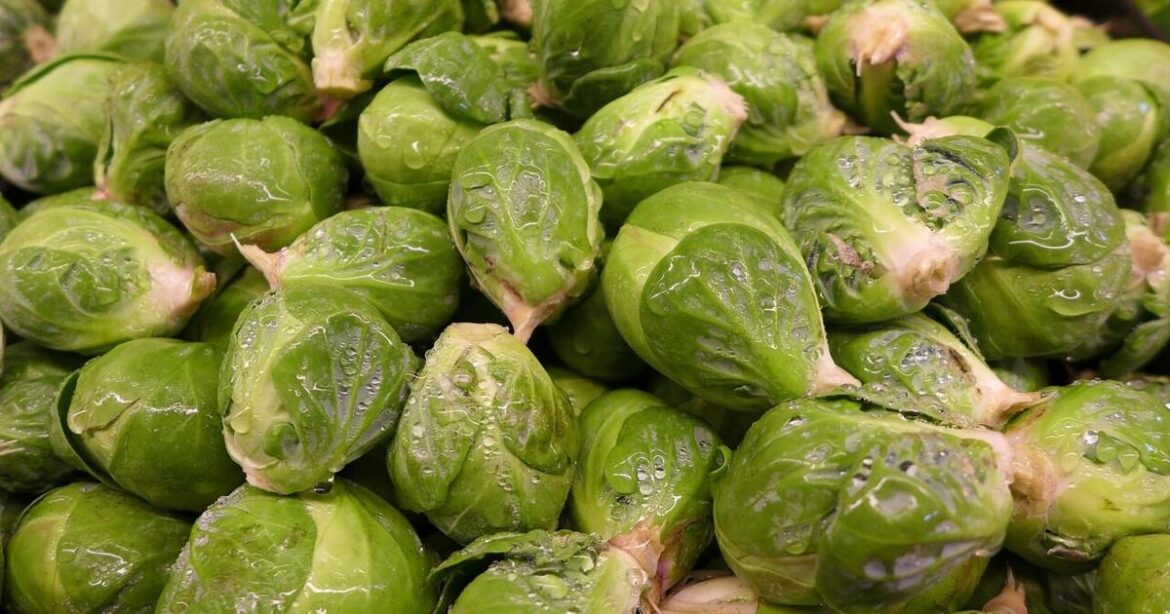“It’s not your mother’s Brussels sprouts,” I heard the UC Farm Advisor from Monterey County say. “The flavor has changed over the past ten years. You should try some.”
Right, I thought, thinking back to the mushy, yellow-green orbs my mother used to serve. But, with his comment and the profusion of Brussels sprouts recipes for holiday meals, I realized I needed to investigate these green spheres further.
Brussels sprouts is an odd name for a vegetable that has the appearance of a “cute little baby” cabbage. No one seems to know where Brussels sprouts originated, but it is assumed they came from Belgium, where Brussels is the capital city. In parts of Europe, they are also known as “Brussels cabbage,” which seems appropriate since they are a subspecies of the common cabbage.
Brussels sprouts are a hardy, slow-growing, long-season vegetable in the Mustard (Crucifer) Family, specifically the cole crop genus (Brassica oleracea), which includes cabbage, broccoli, cauliflower, collards, kale, and kohlrabi. Mature plants have an unusual appearance with a crown of fairly large leaves and a tall stem completely covered with tiny sprouts. The “sprouts” (small heads that resemble miniature cabbages) are produced in the leaf axils, starting at the base of the stem and working upward.
The sprouts improve in quality and grow best during cool or even lightly frosty weather, In California, the plants are grown commercially along the Central coast where there is a long, cool growing season. In our area, we need to plant Brussels sprouts in the fall or winter for winter and spring use. The plants will mature in 80-100 days. Be aware that sprouts maturing in hot or dry weather will be flimsy and bitter.
The best varieties to plant for our area are Jade Cross and Long Island Improved. Brussels sprouts are grown much like the related cole crops: cabbage, cauliflower, and broccoli. Set transplants about a foot apart. Apply small doses of nitrogen fertilizer every four weeks and water regularly throughout the growing season to keep the crop growing vigorously.
When the leaves start to turn yellow, you can begin picking. Harvest can last for a month or more, as the sprouts mature from the bottom of the stem upward. Pick the sprouts when they are green, firm, and about the size of a golf ball. Break away the leaf just below the sprout and snap off the sprout. Pick the sprouts upward along the stem until the sprouts become too small. The small sprouts will develop if allowed to remain on the stem. A single plant can yield up to 50-100 sprouts. Once a sprout is picked, new ones will not form in that spot. Full-grown sprouts keep well on the plant in cold weather, making them a great winter harvest item for gardeners.
All cole crops share the same disease and insect problems. Downy mildew disease is a much bigger problem on the coast than in the valley. Insect pests, such as aphids and cabbage moths (the worms) can be problematic. Treat mildew by improving air circulation, hose off aphids with water or an insecticidal soap spray, and treat cabbage moths with Bacillus thuringiensis (caterpillar killer), if the populations are huge.
Fresh Brussels sprouts, properly cooked, are deliciously delicate in flavor. Plant breeders have selected varieties that are a lot less bitter than “mother’s old Brussels sprouts.” Cole crops are highly regarded for their nutritional value, providing high amounts of vitamin C, soluble fiber, and they contain multiple components with potent anticancer properties. Maybe it is time to give Brussels sprouts another chance, this time with a new attitude and a modern cooking spirit.
Nancy Hawkins is a UC Master Gardener of Tulare-Kings Co.


Comments are closed.